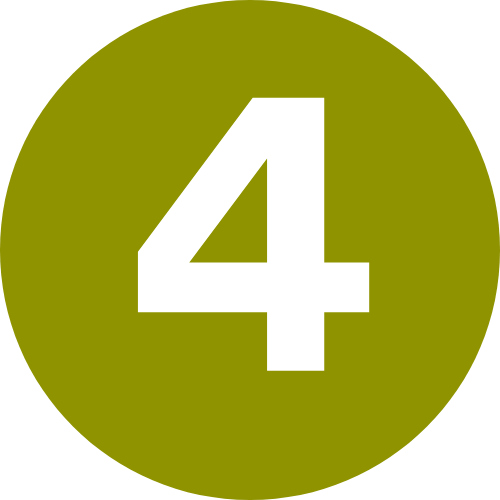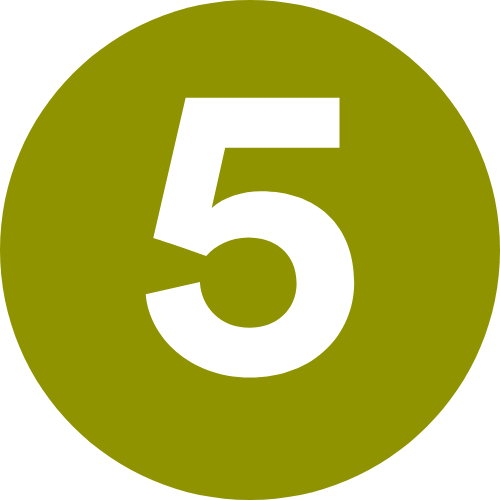The Future of Education in Delaware
As we seek to recover, rebuild and renew our commitment to education, our students deserve MORE than a return to normal, they deserve to… Believe in Better. Here are our five promises to America’s students and families:
Our journey
Our voices
Our guiding stars
Our vision
A student’s educational journey
Measures of success
OUR JOURNEY
Situated between the global hubs of New York City and Washington, D.C., you will find The First State, with an impact and intrigue that belie its small size. Beyond its pristine beaches, abundant historic landmarks and industrious rivers, Delaware is home to even more remarkable features: initiative and innovation that have shaped the nation and beyond, and a public school system that provides a model for what is possible. The system’s historic challenges have been met with an even stronger push for excellence. Together, let’s embark on a journey into the future of education in Delaware, traveling a path to discover how we can ensure all our students fulfill their potential.
Our journey begins with a look back at efforts made across the state that led us to where we stand today. Over the past several years, Delaware has taken key steps toward great schools:
➊ More Delaware students are accessing college and career pathways than ever before.1
➋ Graduation rates are at an all-time high and the dropout rate is at a historic low.2
These forward steps were the fruit of our ability to rally as neighbors around a common set of goals for our children’s future. Yet the pace of change in our economy, and the world, requires us to adapt and innovate again. Together we must chart a new path into the future.
1. Delaware Pathways, “Delaware A National Leader in Career Pathways, Case Study Finds”, October 27, 2017.↩
2. Delaware Department of Education, “Graduation and Dropout Rates”, Delaware Summary of 2016–2017 Graduation and Dropout Data Presentation, March 15, 2018, slide 6 and 19, accessed April 19, 2018.↩
3. Delaware.gov, “Delaware sees increases in AP participation, performance”, October 19, 2017.↩
4. Vision Coalition of Delaware, 2018.↩
Our voices

Erica Dorsett
“It’s not enough to be told your child is being prepared for a bright future. As parents, we need to be seen as essential components in ensuring children receive the quality education they deserve. Once parents are informed and educated on the facts, proper standards and policies that shape their children’s lives, they gain the confidence to hold schools and decision-makers accountable for results. Empowered parents become problem solvers, strategic partners and effective advocates in the call for great schools.”
Erica Dorsett is the marketing director for a family business owned by her and her husband. She is currently a board member of Leading Youth Through Empowerment and volunteers as a parent representative for TeenSHARP-Delaware. Erica is currently completing a degree at Wilmington University.

Zachary Jones
“Excellence means empowering students to solve real-world challenges, then supporting them on that journey. It is amazing how much our students are capable of when they are connected to their passion and the necessary expertise to help move their ideas forward. Students see the problems all around us and want to improve their schools and communities. How will we give them space and support to make the change they want to see?”
Zachary Jones is the Director of Dual School, a program to help high school students launch passion projects. He has spoken at Google and led workshops at The Stanford d.school. Zachary is also the author of the book “The World Changer’s Handbook” and a daily blog.
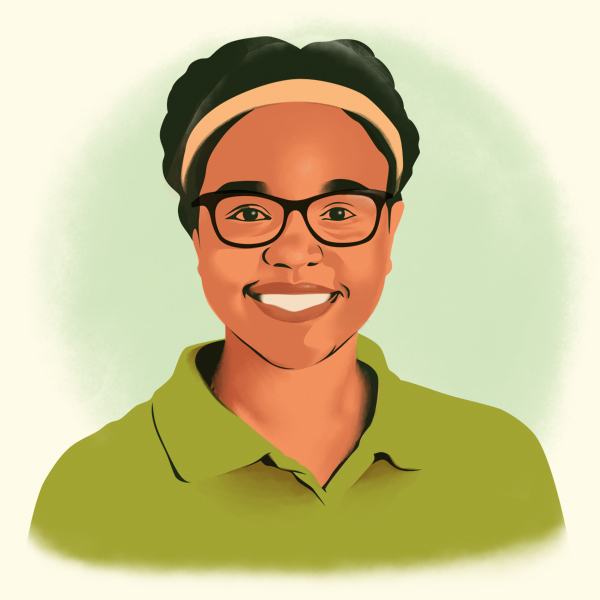
Yasmine Signey
“My generation is the future, and the rapidly changing world will not wait for us. Education should promote the exploration of new ideas and the creation of quality opportunities for all students. With changing industries, we need a system that promotes quality programs and pathways—a system that produces students ready for both college and career. Students have an opportunity to lend their critical voices to the creation of this new approach to education.”
Yasmine Signey is a senior at Woodbridge High School in Sussex County. As a future first-generation college student from an immigrant family, she understands the importance of education. Yasmine is a student athlete and is currently working while attending school. She will be attending Middlebury College and plans to study chemical engineering.

Pati Candelario
“As a Spanish teacher, I know that it is important for my students to use language to speak and connect with others on a personal level. A second language opens so many doors for our students, and frames the way they see the world. There is a shortage of bilingual educators in the state. I believe we need to provide incentives for this skill as our English-language learner population grows throughout Delaware. We must ask ourselves: How are we, as educators, advocating for systemic change?”
Pati Candelario is a Teach For America alumna. She is currently in her fifth year as a high school Spanish teacher at the school where she completed her initial Teach For America placement in Seaford, Delaware. Pati was Seaford High School’s 2017–2018 Teacher of the Year.
Our guiding stars

Discovery
To reach this destination, we will infuse our schools and our education system with the opportunities for endless discovery that have defined the legacy of industry in Delaware. We will strengthen the alignment and connections between our K–12 education system, Delaware’s institutions of higher education and leading industries. We will create pathways to new careers by promoting entrepreneurship, work-based learning and innovation. We will leverage data and research to develop exemplary, replicable models and approaches to serving students’ needs.
Empowerment
To reach this destination, we will ensure families have access to information and opportunities to make school choices that best serve their children’s needs. We will ensure decisions about schools are made in partnership with the community, and that diverse voices are represented in policy conversations. We will ensure people working in our schools are empowered to make decisions in the best interest of learners. We will ensure students have agency in their learning and in classrooms that promote their unique strengths.
Diversity
To reach this destination, we will combine language skills and cultural competence to give our students an edge as leaders of tomorrow. We will make multilingualism a foundational element inside every school. We will prioritize creating a teacher workforce that reflects the diversity of our students. We will expose students to content that is relevant across the cultures of our state, our country and the world.
Excellence
To reach this destination, we will embrace rigorous standards in all our subjects. We will reimagine assessments to better serve stu-dents and teachers. We will celebrate, compensate and elevate educators as the individuals and professionals they are. We will identify and learn from high-performing teachers and schools to ensure that ours are improving based on approaches that work.
Our vision
Providing these opportunities for all kids means navigating through our unique strengths and opportunities. Delaware will be one of the most diverse states in the nation by 2060. We are also the only state with more companies than people. Our history of creativity, entrepreneurship and business savvy are sewn deep into our state’s fabric. Our small size makes us nimble and efficient in creating change, learning and getting results.
We are charting the path to a future where:
their agency, uniqueness and potential.
A student’s educational journey

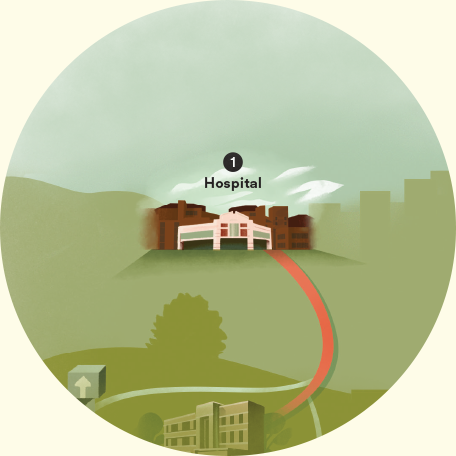
Hospital
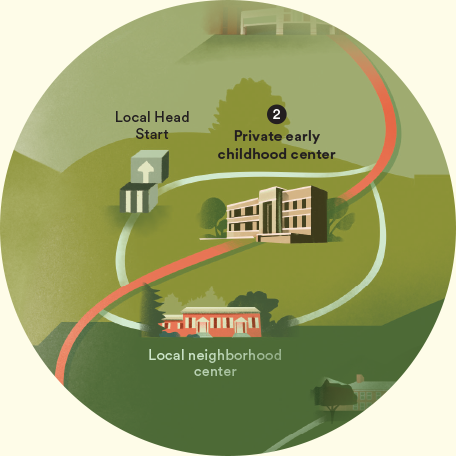
Private early childhood center
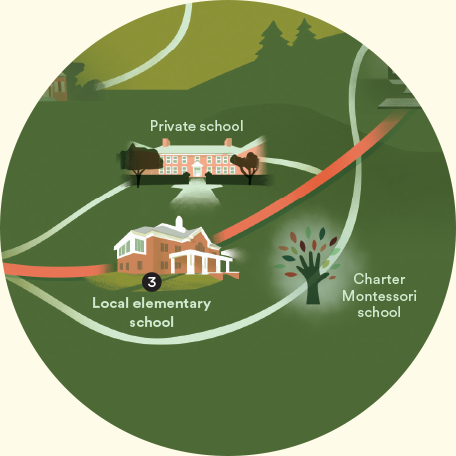
Local elementary school

Coding program

Charter middle school
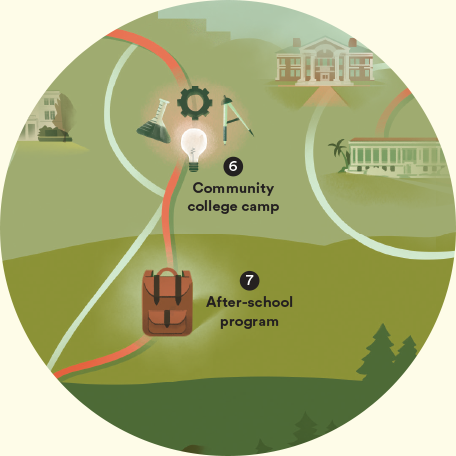
Community college camp
After-school program
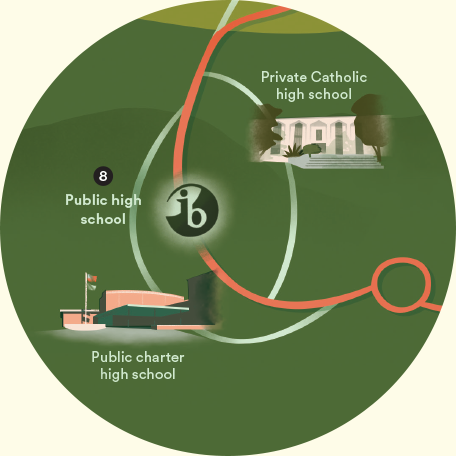
Public high school
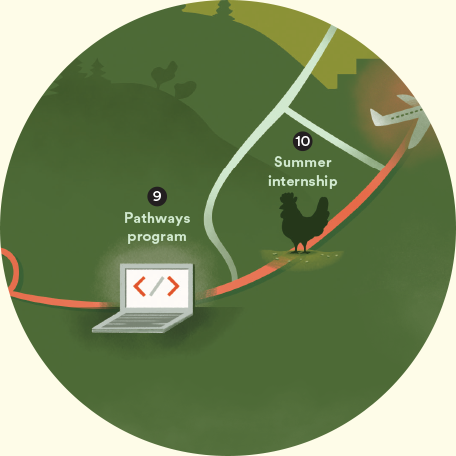
Pathways program
Summer internship
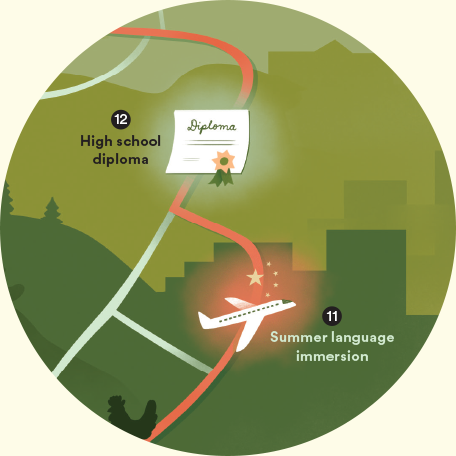
Summer language immersion
High school diploma
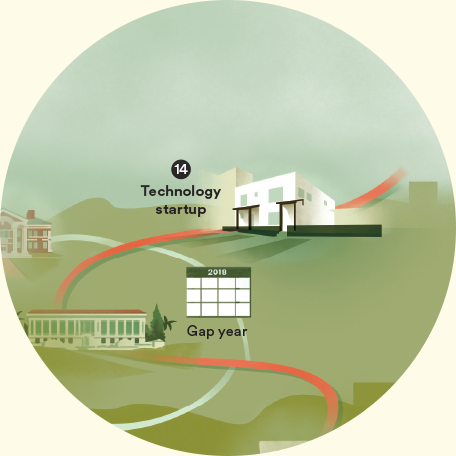
Pathways program

Technology startup
Measures of success
We hope our journey into the future provides a vision—and guidance—for anyone who shares our belief that Delaware can emerge as a national and global leader in providing educational opportunity for all. We want the “Delaware Model” to serve as a strong example for communities and countries around the world. While our four guiding stars chart a uniquely Delawarean vision of change, we also know that we must track our progress against other states.To do so, we will use 50CAN: The 50-State Campaign for Achievement Now’s four dimensions of a healthy and dynamic learning system:
Community → Effective, sustainable policy change requires strong relationships, real-time feedback and long-term ownership by the people served.
Competition → Greater responsiveness and better outcomes are more likely when people have the power to choose among multiple options to meet their needs.
Performance → Success requires both the flexibility to pursue excellence and rigorous standards to ensure those serving the public are held accountable for their results.
Pluralism → Diverse populations are better served by dynamic systems that support lots of paths to success and embrace different traditions, values and beliefs.
Below you’ll see how we currently rate ourselves in each dimension. These ratings use 50CAN’s four-point scale. We also outline next steps for our future progress.

Community
(2 points out of 4)
Our coalition of involved and dedicated business, non-profit and philanthropic leaders works with educators to improve learning outcomes for students across the state. Yet Delaware has room to grow in diversity among its teaching force, and engaging the community to improve our education system.
Competition
(1 point out of 4)
Though we provide education alternatives (open enrollment, magnet schools, charter schools) to our students, the school choice process is challenging. We must make enrollment information easier to find and guarantee transportation is provided to all students navigating our choice system.
Performance
(1 point out of 4)
We use rigorous, accessible standards across all grades, and students in grades three to eight take an aligned assessment. We must ensure that all high schoolers take an aligned assessment, as well, including English-language learners. We should also report assessment results for all student groups.
Pluralism
(2 points out of 4)
We have taken steps to meet students where they are—allowing for alternative approaches to education, embracing diversity and difference—but we can grow. We must create a well-rounded definition of student success and identify funding for alternative approaches to education.






